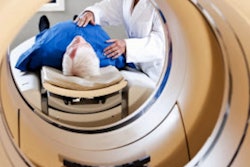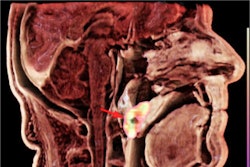Researchers in Europe have developed a new contrast agent that works with both PET and MRI, according to a recent study published in Angewandte Chemie International Edition.
A group at the Werner Siemens Imaging Center in Tübingen, Germany, collaborated with the Institute of Organic Chemistry and Biochemistry of the Czech Academy of Sciences (IOCB Prague) to demonstrate the diagnostic capabilities of so-called F-18 [Gd (FL1)] PET/MRI in a pilot study on healthy mice. The approach successfully detected early cases of unilateral renal dysfunction, a condition that is typically challenging to diagnose.
![Current PET/MRI imaging of healthy and damaged mouse kidneys using the dual contrast agent F-18 [Gd (FL1)]. The imaging provides consistent signals from both PET and MRI. In healthy kidneys, the center of the kidneys appears dark in the MRI image and very bright in the PET image, indicating normal excretion of the contrast agent. The onset of impaired function in one kidney is indicated by the accumulation of the contrast agent and its slow excretion. Precise mapping of MRI and PET data ensures detailed morphological and quantitative analysis of kidney impairment. Image and caption courtesy of IOCB Prague.](https://img.auntminnie.com/files/base/smg/all/image/2024/08/PET_MRI_agent.66b25358df3b3.png?auto=format%2Ccompress&fit=max&q=70&w=400) Current PET/MRI imaging of healthy and damaged mouse kidneys using the dual contrast agent F-18 [Gd (FL1)]. The imaging provides consistent signals from both PET and MRI. In healthy kidneys, the center of the kidneys appears dark in the MRI image and very bright in the PET image, indicating normal excretion of the contrast agent. The onset of impaired function in one kidney is indicated by the accumulation of the contrast agent and its slow excretion. Precise mapping of MRI and PET data ensures detailed morphological and quantitative analysis of kidney impairment. Image and caption courtesy of IOCB Prague.
Current PET/MRI imaging of healthy and damaged mouse kidneys using the dual contrast agent F-18 [Gd (FL1)]. The imaging provides consistent signals from both PET and MRI. In healthy kidneys, the center of the kidneys appears dark in the MRI image and very bright in the PET image, indicating normal excretion of the contrast agent. The onset of impaired function in one kidney is indicated by the accumulation of the contrast agent and its slow excretion. Precise mapping of MRI and PET data ensures detailed morphological and quantitative analysis of kidney impairment. Image and caption courtesy of IOCB Prague.
"Our solution is a cleverly designed molecule that combines gadolinium and radioactive fluorine-18, which is commonly used in medical scans and is easy to obtain," said lead author Jan Kretschmer, PhD, in a news release.
Hybrid PET/MRI combines the quantitative power and sensitivity of PET with the high functional and anatomical detail of MRI, yet the development of dual PET/MRI probes has been hampered by challenging synthesis and radiolabeling, the researchers noted.
The full study was published July 26 and is available here.




















